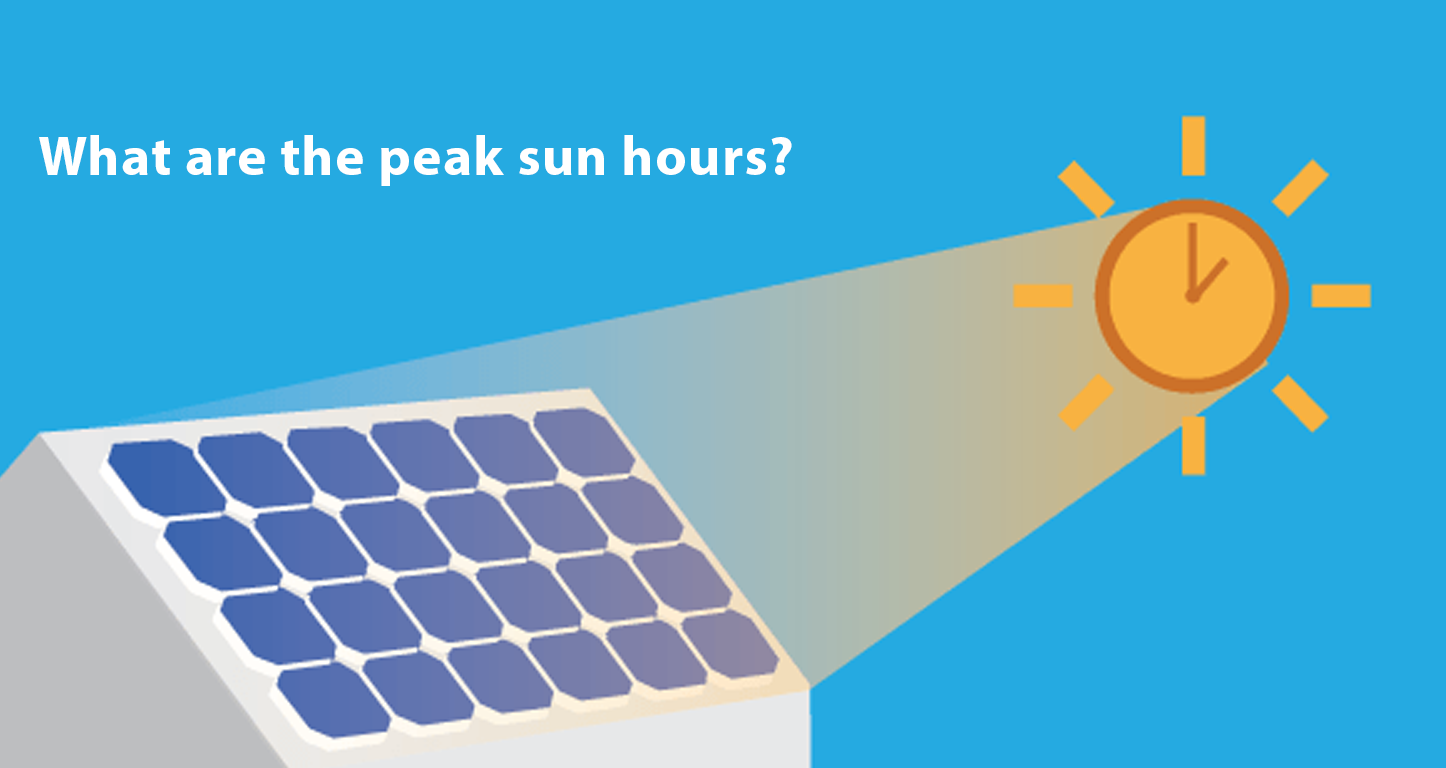How many peak sun hours does your PV system need?
Over the past decade, there has been significant growth in the number of residential and commercial-scale solar installations. Installing a photovoltaic (PV) system is one of the most beneficial decisions that anyone can make. However, the first thing that comes to the mind when thinking about PV system installation is ‘how much sunlight will the PV system need to prove its worth?’
Exposure to reasonable amounts of sunlight is essential for maintaining the efficiency of solar panels. However, solar panels are capable of generating electrical output even on a non-sunny day. Thus, the answer can be tricky, as well as simple.
On average, solar panels will need about four peak sun hours to provide substantial amounts of electrical output. The output on a non-sunny day is very less in comparison with a typical sunny day. Thus, one can say that the right amount of sunlight is necessary for consistency in power output.

What are the peak sun hours?
The sun shines at its maximum value for a certain number of hours every day. An hour of sunlight that offers 1,000 watts of photovoltaic power per square meter. Solar intensity reaches a peak when the sun is highest in the sky. Also, the closer areas receive more peak sun hours in comparison with the places that are away from the equator.
Below is a list that shows the average peak sun hours of different states:
|
State |
Number of Peak-sun hours |
|
Arizona |
6.5 |
|
Nevada |
6.20 |
|
California |
5.82 |
|
Texas |
5.64 |
|
Florida |
5.44 |
|
Colorado |
5.37 |
|
North Carolina |
5.01 |
|
Maryland |
4.47 |
|
Washington |
4.38 |
|
New Jersey |
4.21 |
|
Virginia |
4.13 |
|
Massachusetts |
4 |
|
Pennsylvania |
3.6 |
|
New York |
3.58 |
Source: Solardirect
Don’t live in a fool’s paradise
Sure, the availability of good amounts of daily sunlight gives an upper hand to any solar system installation. Yet, it is not the only factor that will affect the power outputs of your PV system. Relying on the peak sun hour figures will not help if one chooses a PV system that offers below-average efficiency. For a solar panel system to provide the desired electrical output, one must consider using premium-quality panels.
The use of solar accessories (such as MPPT trackers and charge controllers) will also have an impact on the performance and output of a solar energy system. The installation design of the PV system also has a significant role to play. The positioning of solar panels determines the angle of incidence for sun rays, which affects the power output. Also, a difference in utility prices and state-specific rebate schemes will affect the cost and effectiveness of your PV system.
Below is a list of top 10 solar states in the country:
|
State |
% of electricity from solar |
Total Solar installation |
|
California |
20% |
<23 GW |
|
North Carolina |
5.94% |
<4.5 GW |
|
Arizona |
7.02% |
<3.6 GW |
|
Nevada |
14.24% |
<2.66 GW |
|
Texas |
1.19% |
<2.6 GW |
|
New Jersey |
4.95% |
<2.5 GW |
|
Massachusetts |
15.39% |
<2.2 GW |
|
Florida |
2.05% |
<2 GW |
|
Utah |
7.09% |
<1.6 GW |
|
Georgia |
1.91% |
<1.5 GW |
Source: SEIA
Takeaway
PV systems don't need to prove beneficial in all the areas that offer an average of 4 peak sun hours. Arizona, one of the sunniest states, has lesser solar installations than California, which rules the solar game.
As of now, there is 81.4 GW worth of solar installation across the country. Almost 250,000 Americans are working in the solar sector. Thus, it is safe to say that solar power is gaining traction despite the irregularities in rebate systems and installation prices across the country.

 Bifacial
Bifacial Mono Crystalline
Mono Crystalline Poly Crystalline
Poly Crystalline Thin Film
Thin Film Foldable Solar Panel
Foldable Solar Panel Residential On Grid
Residential On Grid Commercial On Grid
Commercial On Grid Solar Storage / Hybrid Inverter
Solar Storage / Hybrid Inverter Solar Battery Inverter
Solar Battery Inverter RV Off Grid Solar Inverter
RV Off Grid Solar Inverter Lithium ion Batteries
Lithium ion Batteries AGM Batteries
AGM Batteries Lead Acid Batteries
Lead Acid Batteries Lithium Batteries
Lithium Batteries Lead Carbon Batteries
Lead Carbon Batteries Deep Cycle Flooded Battery
Deep Cycle Flooded Battery Solar Workstation
Solar Workstation Solar Security Camera
Solar Security Camera Solar Freezer
Solar Freezer Battery Charger
Battery Charger Meters
Meters Distribution Panel
Distribution Panel Battery
Battery Invertor Charger
Invertor Charger Breaker Panel
Breaker Panel